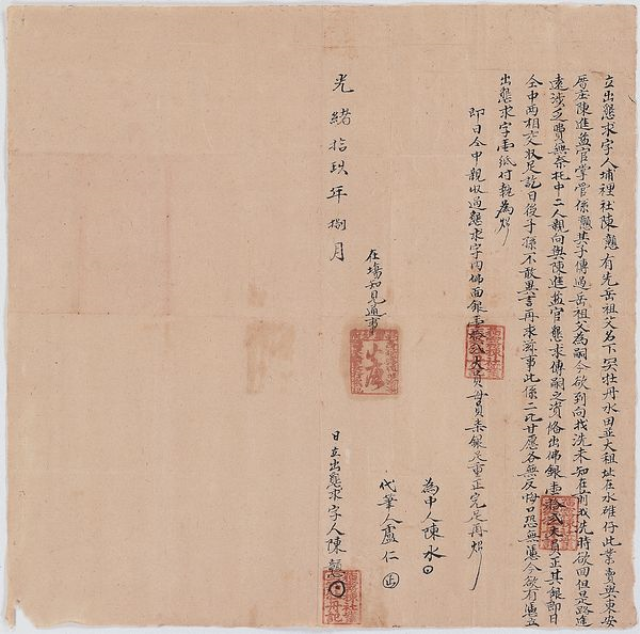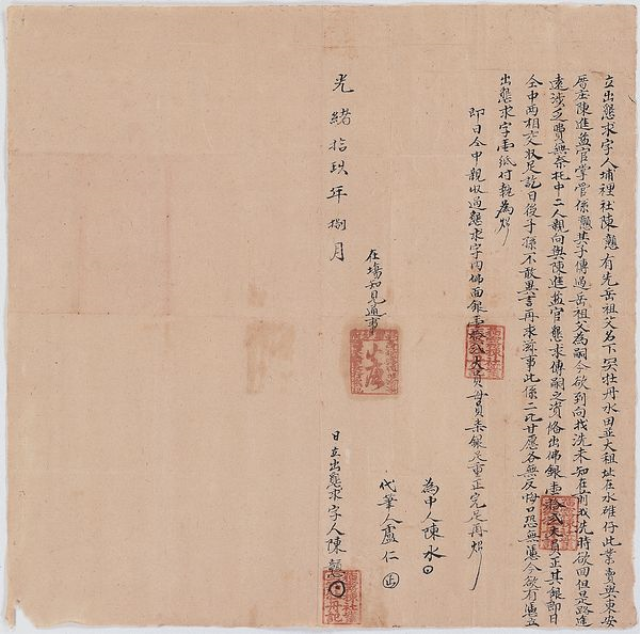:::
Buli residents’ contract for additional payment
Contracts were important for resolving land disputes among the people in Taiwan. In the Qing Dynasty, a large number of Han people arrived in Taiwan for land reclamation projects, and thus signed many land reclamation, land lease and sale related contracts with different plains indigenous tribes living in the Western plains.
This contract was written in 1893, where Puli Villager Chen Zhuang and Chen Jin-Yi drafted the additional payment agreement stating that a peony field in Shuiduizai was sold to Chen Jin-Yi and now additional payment is needed. However, since Chen Zhuang lived so far away he commissioned an intermediary to collect the payment.
Although this additional payment agreement is a contract of sale, unlike the modern day “payment on delivery” method, the contract is a type of “live sale”, meaning that the landlord reserves the right to buy back the land or demand additional payment after the land is sold. At the same time, the buyer also does not pay the full price when taking possession of the land, in case the landlord seeks additional payment in the future.
From leasing, pawning, and selling to the need to make additional payments, the contracts show the process by which the indigenes gradually lost their land to the Han people. They also reflect the social relationships that existed at the time, so that visitors can better understand how Taiwanese society operated during the Qing Dynasty.











